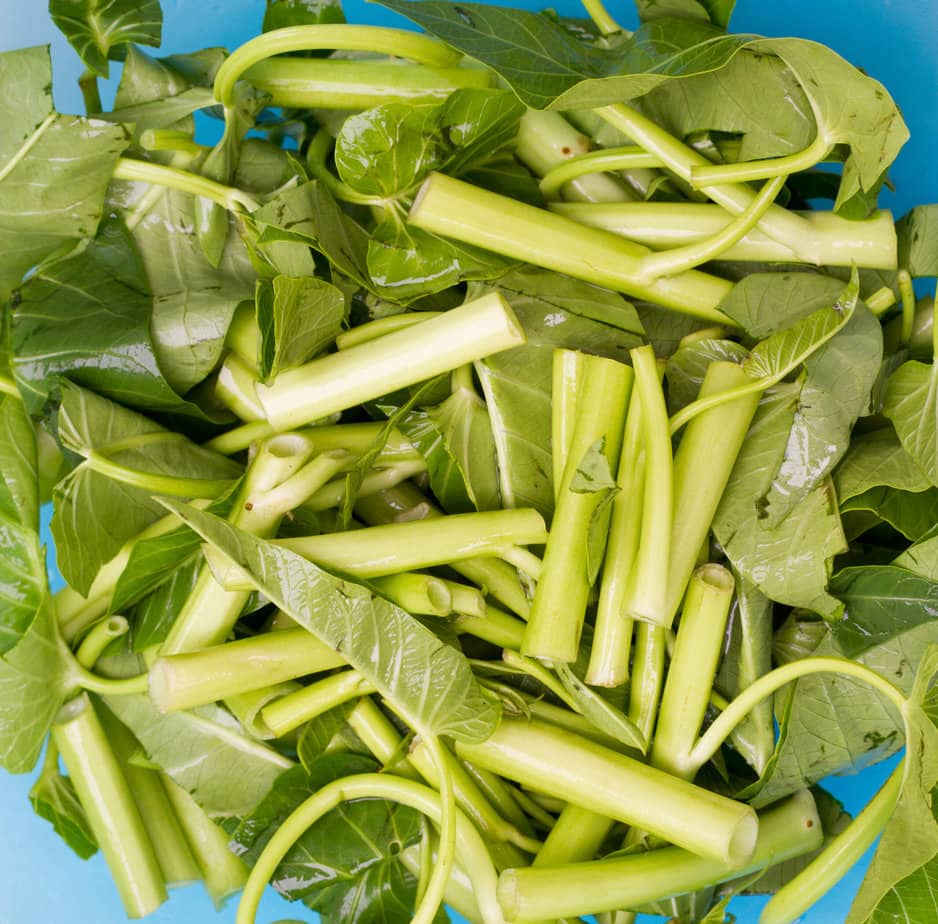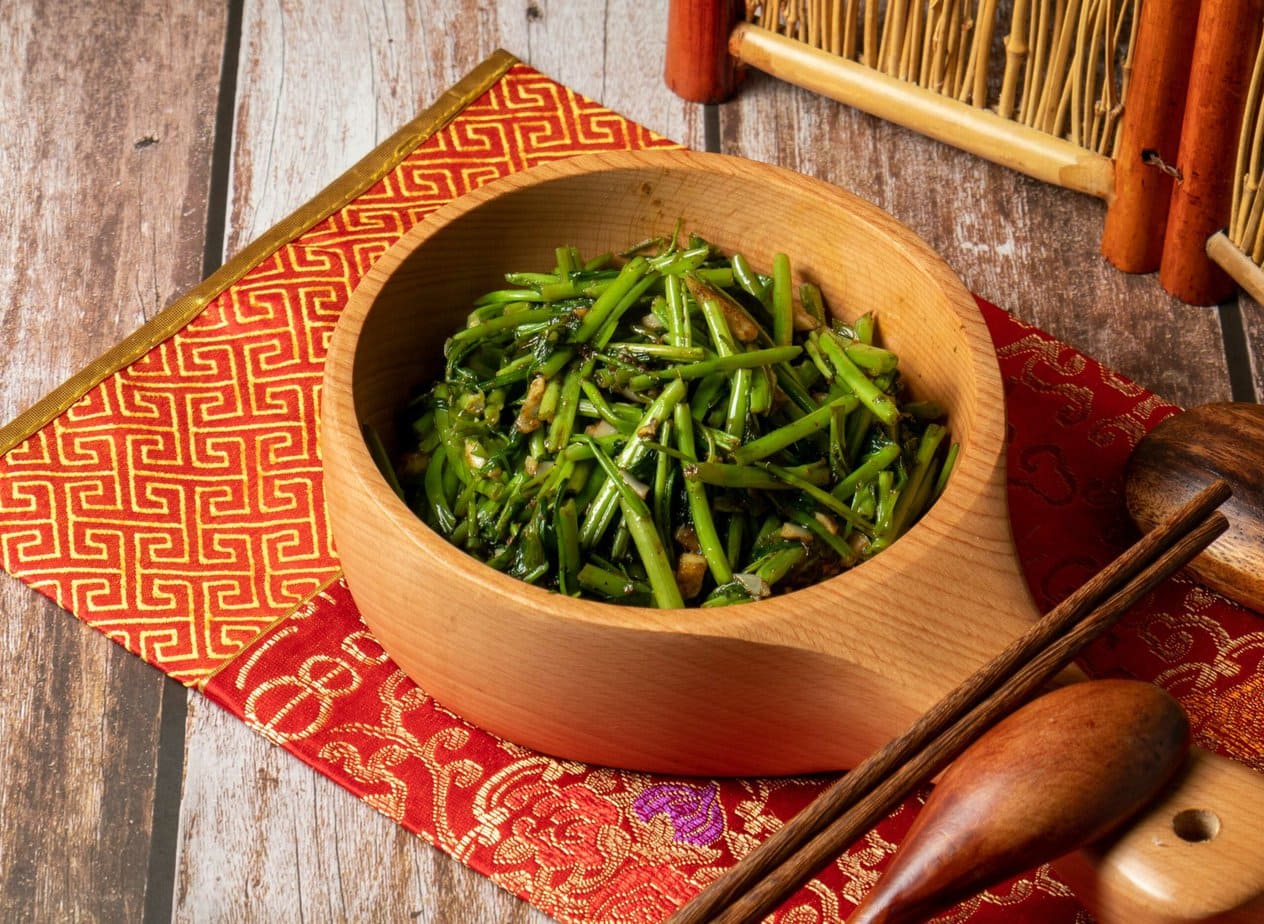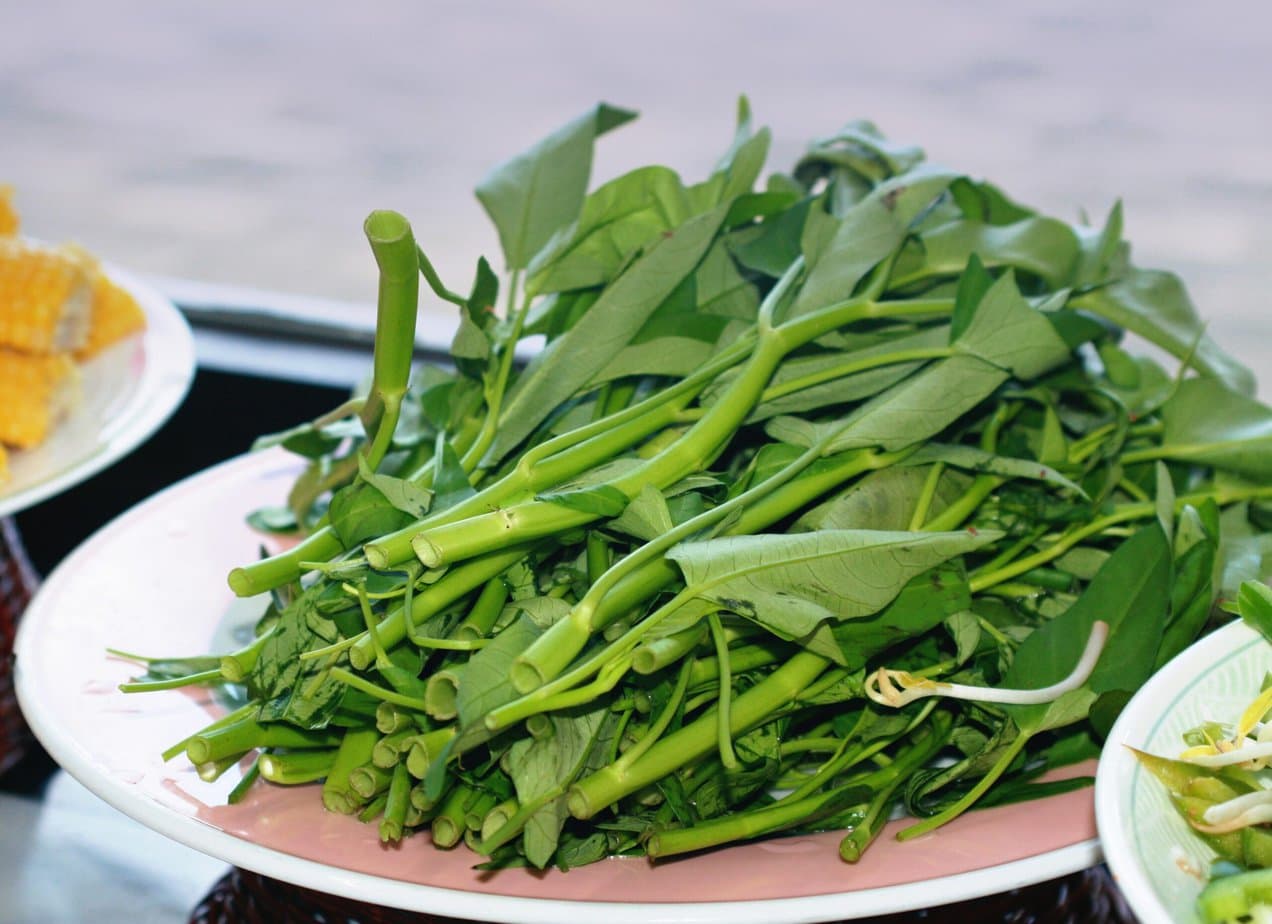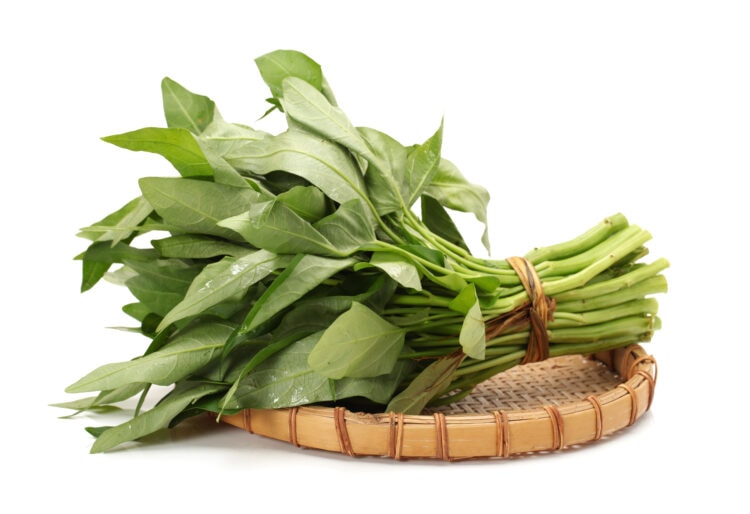What Is Water Spinach?
Water spinach, also known by its scientific name Ipomoea aquatica, is a vegetable belonging to the Convolvulaceae family, just like sweet potatoes. It is an aquatic or semi-aquatic herbaceous plant with hollow, smooth, and long stems measuring between 2 and 3 meters. Numerous leaves grow on these stems, which can be narrow or broad. The plant also has bell-shaped flowers.
The exact geographical origin of water spinach is uncertain. According to various studies, it could be native to Asia, Africa, or the southwestern Pacific islands, and was first cultivated in Southeast Asia.

An Invasive Plant in the USA
Nowadays, water spinach has also spread to North America. In the United States, this highly productive vegetable is classified as an invasive species. In ideal climates, such as tropical or subtropical ones, it can grow easily throughout the year, both on land and in water, especially during summer. Ironically, it is this growth capacity that has made it a prized ingredient in Southeast Asian cuisine.
The Chinese Legend Behind Water Spinach
This vegetable is also linked to a Chinese legend concerning Prince Bi Gan, Prime Minister of the Shang Kingdom. According to the legend, he was supposed to tear out his heart at the request of one of the king’s concubines, but he remained alive thanks to a spell.
Later, he came across a woman selling water spinach and asked her if a human could live without a heart, like the hollow stems of this plant. She replied no, which broke the spell, and he died on the spot.
It is said that only water spinach grows around his grave. This is why the vegetable is called kōng xīn cài, which means “heartless vegetable” in Mandarin. It is also known by other names in different languages, such as kang kong or kang kung in Malay, Indonesian, and Filipino, rau muong in Vietnamese, phak bung in Thai, and ong choy in Cantonese.
Surprisingly, in English, it is called “water spinach”, although it has no relation to spinach.
Is Water Spinach Edible?
Water spinach is edible. The stems are consumed cooked, but the leaves can be enjoyed raw or cooked.
The Two Types of Water Spinach
There are two main varieties of water spinach: green water spinach and white water spinach.
Green water spinach, also called Ching Quat or green-stemmed water spinach, has a dark green color. Its stems are thinner and more rigid, with narrow leaves and white flowers. This variety is often grown in moist soils.
As for white water spinach, also known as Pak Quat or white-stemmed water spinach, it is characterized by lighter-colored stems that are thicker and more tender. Its leaves are also larger and arrow-shaped.
This variety is adapted to aquatic environments similar to rice paddies, which is why it is often found floating on ponds, lakes, and rivers in Southeast Asian countries.
What Does Water Spinach Taste Like?
Both varieties of water spinach have similar flavors, reminiscent of a mix between spinach and watercress.
However, unlike spinach, they are not bitter. When tasting them, you can also detect a slight sweetness and a fresh sensation.
Water Spinach in Cooking
The leaves and stems of water spinach are generally consumed. This vegetable is highly appreciated in Asian cuisine, particularly in Southeast Asian countries. It is mainly used in soups and stir-fry dishes.
Stir-fried water spinach is probably one of the most well-known dishes. Although recipes may vary from country to country, generally, water spinach is quickly stir-fried over high heat in a pan or wok, and seasoned with garlic, onions, ginger, chili peppers, and various spices and condiments.
In Vietnamese cuisine, fish and oyster sauces are often added, while in Indonesian cuisine and that of other maritime Southeast Asian countries, shrimp paste is used. The Chinese-Indonesian recipe incorporates tauco, a fermented soybean paste. In Chinese cuisine, oyster sauce and fermented tofu are preferred, while the Cantonese version uses X.O. sauce.

There are also other dishes made with water spinach, such as water spinach noodles called mie kangkung in Indonesia, the sweet and sour water spinach soup called canh chua in Vietnam, as well as Vietnamese water spinach salad, among others.
How to Prepare Water Spinach for Cooking?
Regardless of the chosen recipe, it is essential to properly prepare the water spinach before cooking. First, cut about 5 cm from the end of the stems, unless they are very young and tender, to remove the tough and fibrous part.
Then, depending on the length of the stems, cut them in half or in thirds. After that, it is necessary to rinse the vegetable well in cold water to remove sand and impurities. Finally, drain it by shaking off excess water, then you can proceed with cooking.

Where to Buy Water Spinach?
Water spinach is available for purchase in bunches at some grocery stores, farmers’ markets, Asian specialty stores, as well as on online retail sites.
However, it’s important to note that while this vegetable is inexpensive in Southeast Asian countries, its price can be significantly higher in European countries, around 15 euros per kilogram. When purchasing, ensure the freshness of the vegetable. Additionally, it is sometimes possible to find water spinach seeds in some supermarkets or on online retail sites.
How to Store Water Spinach?
Water spinach can be stored for several days in the refrigerator, keeping it in packaging as you would for other vegetables. However, it’s best not to wash it if you don’t plan to cook it immediately, as this would accelerate its decomposition. Ideally, try to consume it within one to three days to enjoy its best quality. It is not recommended to consume it if it has been stored for more than five days.
The Benefits of Water Spinach
Nowadays, water spinach is valued not only for its antipyretic properties but also for its ability to alleviate constipation issues related to liver dysfunction. Additionally, it is used in the treatment of vaginal discharge and intestinal transit disorders. Furthermore, the crushed leaves of the plant can be used as a poultice to facilitate the opening of skin abscesses.

